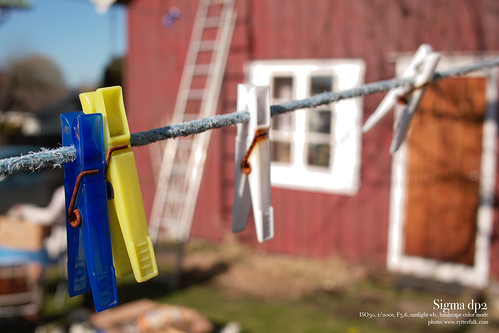The GetDPI Photography Forum
Great to see you here. Join our insightful photographic forum today and start tapping into a huge wealth of photographic knowledge. Completing our simple registration process will allow you to gain access to exclusive content, add your own topics and posts, share your work and connect with other members through your own private inbox! And don’t forget to say hi!
DP2 REVIEW /w fullsize Shots
- Thread starter helenhill
- Start date
simonclivehughes
Active member
Boy, that looks good!
Cheers,
Cheers,
D
ddk
Guest
There wasn't much wrong with DP1's image quality either, just the camera had idiosyncrasies which turned many, including myself off. The DP1 wasn't my first Sigma, but it would be my last; I never owned a camera that would actually get in my like this one. Between my three Sigma made cameras I don't even have a single image that I can call a keeper... Aside from their horrible bodies I never owned a Sigma lens that I liked either and DP1's was no exception. So now DP2, no, thank you!
N
nei1
Guest
Have to agree Terry, ryterfalk seems like a very nice person but has most definatly been bought by sigma,or worse is hoping to be bought by sigma.However there are worse things in the world and once Ive saved up my pennies one of these will be my first spiritual digital leica,shame its not weatherproof though............all the best,Neil.
Lars
Active member
Nice images but the DP2 seems to clip overexposed highlight real hard, as seen in the clothesline closeup. Not pretty, especially considering the background was fully blurred. Maybe there was something wrong in postprocessing, it looks too bad to be acceptable by the manufacturer. I'd rather give up two stops of shadow DR to get a smooth transition into blown highlights.
Update: Apparently this was a preproduction unit, let's hope the final product behaves better.
Update: Apparently this was a preproduction unit, let's hope the final product behaves better.
Streetshooter
Subscriber Member
If you look at his work with the DP1,
he seems to like exposures like that.
I think it's a style thing and not so much
a fault of the camera.
he seems to like exposures like that.
I think it's a style thing and not so much
a fault of the camera.
Lars
Active member
I have to say that I would strongly disagree. Did you look at the highlights in the clothesline closeup? In the window frame that's a very hard clip to blown white, more like a threshold. Most camera manufacturers try to use the highlight room to avoid clipping like this.If you look at his work with the DP1,
he seems to like exposures like that.
I think it's a style thing and not so much
a fault of the camera.

Will
New member
I've been noticing the tendency towards clipped highlights recently on the DP1. I tried taking pictures of some yellow tulips in bright sunlight but even exposing -1.0 I had failed to under expose enough to avoid it. My GRD1 had no trouble. I'll upload to flickr and post them here, though they are really bad images so don't judge me by them!
Still clipped but at least still yellow!
GRD1 -1.0 exp

DP1 -1.0 exp

Still clipped but at least still yellow!
GRD1 -1.0 exp

DP1 -1.0 exp

Last edited:
fordfanjpn
Member
Streetshooter
Subscriber Member
Well, it beats the heck out of Tri-X in any developer.....I agree. Both SD-14 and DP-1 have insufficient dynamic range, especially in the brighter areas.
I always compare to my silver prints.....figure them at Zone X or so...
Don
Streetshooter
Subscriber Member
Lars, your right on.
Maybe I'm old but I never understood
JPEG capture.
Maybe I'm old but I never understood
JPEG capture.
Will
New member
Trouble is that the clipping is there in the RAW file anyway. Taking it back to an even lower exposure would help but then then you have extreme shadows to deal with.The obvious fix, of course, is to shoot raw, expose at -2, and do autoexposure in postprocessing. But you can forget Jpeg.
Lars
Active member
Sure, but that's true for all sensors - there is a hard ceiling in terms of the highest value that the sensor can read. Unlike film, a sensor is linear in its response. So what some camera makers do is define white as 1-3 stops below what the sensor can handle, and then when creating a Jpeg use a tonemap function to wrap overexposed values into the range limited by the white point, creating a smooth transition into blown highlights. This is very similar to slide film (but not negative film which is approximately logarithmic in its response).Trouble is that the clipping is there in the RAW file anyway. Taking it back to an even lower exposure would help but then then you have extreme shadows to deal with.
So if you have a raw developer software that can do the tonemapping trick - it's sometimes called highlight recovery - then you can underexpose in the camera, then overexpose in the raw developer and let the developer map the overexposed tones into a smooth transition.
